| Lamiaceae (Mint) |
|---|
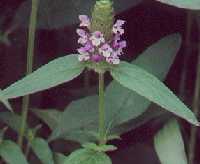
| |
Prunella vulgaris v. lanceolata
Selfheal:
The hooded flowers are irregular in shape. The lower lip of the flower has a fringed edge.
Leaves entire or slightly toothed, do not have a mint smell.
Lower leaves are born on long stems while the upper ones may be stemless.
|
|
| Lamiaceae |
|---|
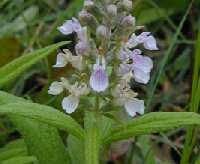
| |
Teucrium canadense
Germander:
Flying insects are attracted to the topless flowers and
the large cental lobe of the lower corolla lip serves as a landing platform.
The two purplish spots on the lobe are like runway lights guiding the insects to the flower.
Toothed leaves.
|
|
| Lamiaceae |
|---|
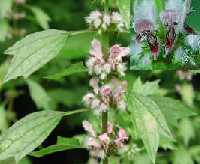
| |
Leonurus cardiaca
Motherwort:
Axillary clusters of sessilem fringed flowers surrounding stem.
Upper lip with 3 lobes. Lower lip 2-lobed.
|
|
| Lamiaceae |
|---|
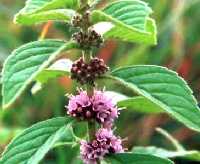
| |
Mentha arvensis
Wild Mint:
Flowers occur in dense, axillary clusters.
This is the only native species of Mentha found in the US;
v. japonica grown for menthol.
M. piperita Peppermint, M. spicata Spearmint.
|
|
| Lamiaceae |
|---|
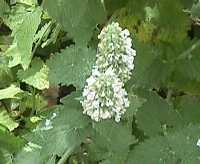
| |
Nepeta cataria
Catnip:
Leaves are darker green on the upper surface and light green or whitish underneath.
Terminal and axillary flowers; lower lip on flowers.
|
|
| Lamiaceae |
|---|
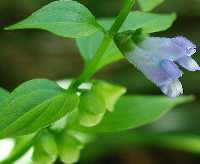
| |
Scutellaria lateriflora
Mad-dog (Blue) Skullcap:
Opposite leaves light green below, dull green above. Veins impressed above, expressed below.
Paired flowers, lower lip single-lobed, upper lip shallowly 3-lobed. Wet soil.
|
|
| Scrophulariaceae (Figwort) |
|---|
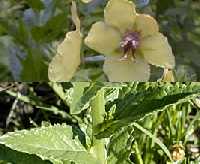
| |
Verbascum blattaria
Moth Mullein:
5 rounded white or yellow petals.
Purple stamens have hairy filaments.
Biennial; 2nd year leaves glabrous, tapering to a point, with distinctly toothed margins.
|
|
| Scrophulariaceae |
|---|
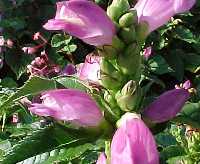
| |
Chelone lyonii
Pink Turtlehead:
Native to southern Appalachiansm often found in spruce-fir forests.
2-lipped, clear pink flowers in tight, spike-like terminal racemes; lower lip is bearded.
Opposite, coarsely-toothed, ovate to broad-lanceolate, dark green leaves.
|
|
| Balsaminaceae |
|---|
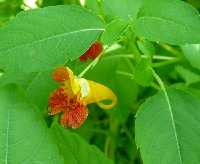
| |
Impatiens capensis
Orange Jewelweed (Spotted Touch-me-not):
Moist soil.
Dew or rain beads up on the leaves forming sparkling droplets which give rise to the common name of jewelweed.
Watch for ruby-throated hummingbirds as they come for nectar.
|
|








